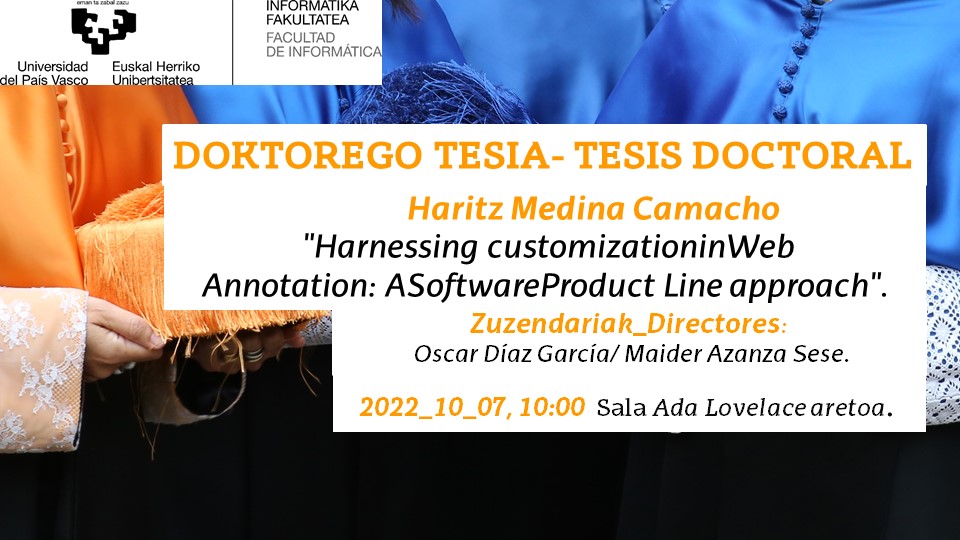2022_10_07 10:00 DOKTOREGO TESI BATEN DEFENTSA HARITZ MEDINA CAMACHO
Lehenengo argitaratze data: 2022/10/06

Haritz Medina Camacho: "Harnessing customizationinWeb Annotation: ASoftwareProduct Line approach".
Zuzendariak_Directores: Oscar Díaz García/ Maider Azanza Sese.
2022_10_07, 10:00 Sala Ada Lovelace aretoa.
ABSTRACT:
"Web annotation is a common and social behavior that helps to mediate reading-writing interaction by conveying information, adding comments, and inspiring conversation in web documents. It is used in areas from Social Sciences and Humanities, Journalism Investigation, Biological Sciences or Education, just to name a few. Annotation activities are heterogeneous, where end-users (students, journalists, data curators, researchers, and so on) have very different requirements for creating, modifying, and reusing annotations. This resulted in a large amount of web annotation tools and different ways to represent and store web annotations. To facilitate reuse and interoperability, several attempts have been made during the last decades to standardize web annotations (e.g., Annotea or Open Annotation) resulting in the W3C Annotation recommendations published in 2017. W3C recommendations provide a framework for annotation representation (data model and vocabulary) and transportation (protocol). However, there is still a gap in how annotation clients (tools and user interfaces) are developed, making developers reimplement common functionalities (i.e., highlighting, commenting, storing,...) to create their customized annotation tool.
This thesis aims to provide a reuse platform for the development of web annotation tools for review. To this end, we operationalize this vision through a Software Product Line called WACline. WACline is a family of annotation products that allow developers to create custom web annotation browser extensions, facilitating the reusability of core assets and their adaptation to their specific review context. It was created following a knowledge accumulation process where each annotation product learns from previously created annotation products. Finally, we reach a family of annotation clients that gives support for three reviewing practices: systematic literature review data extraction (Highlight&Go), students’ assignments review in higher education (Mark&Go), and conference and journals peer-review (Review&Go). For each of the review contexts, an evaluation with real stakeholders has been conducted to validate efficiency and effectiveness improvements brought by customized annotation tools in their practice."


